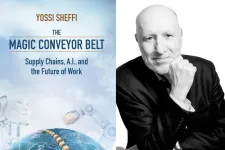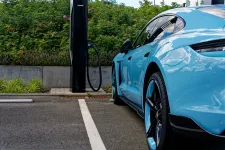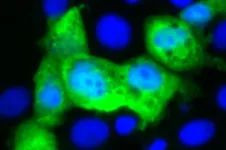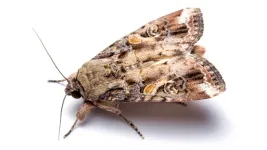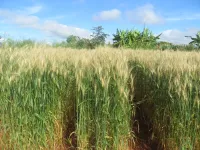(Press-News.org)
Global supply chains are immense feats of technological and organizational sophistication. They are also, as the onset of the Covid-19 pandemic showed, vulnerable to unexpected developments. Will that change as artificial intelligence becomes a bigger part of supply chains? And what will happen to workers in the process?
MIT Professor Yossi Sheffi explores these topics in a new book, “The Magic Conveyor Belt: AI, Supply Chains, and the Future of Work,” published by MIT’s CTL Media. Sheffi, the Elisha Gray II Professor of Engineering Systems at MIT, is also the director of MIT’s Center for Transportation and Logistics, which just marked its 50th anniversary. He talked with MIT News about the new book.
Q: Why did you write this book?
A: After the pandemic started, suddenly supply chains became hot. For the 50th anniversary of the Center for Transportation and Logistics in March, we thought about writing a paper, which became this book. In the first part of the book, I just explain how complex supply chains are, and how amazing they are. You should never be upset when something is not available in a supermarket or on Amazon; you should be amazed that something is there, once you understand what it takes to get it there. Supply chains underline not only people’s standard of living by ensuring the availability of medicines and everyday items, but they are crucial to responding to modern challenges such as resilience and sustainability. The book then examines the technology underlying supply chain operations and business in general, especially AI, leading to an exploration of future of work. These technologies are moving so fast it’s hard to know what will happen, of course.
Q: You can’t predict what impact AI will have, but how do you think about it, and discuss it in the book?
A: I looked at all the industrial revolutions; the fear of losing a job has always been prevalent. In 1589, William Lee asked the Queen of England for a patent for his stocking-making device. The queen shut it down, fearing job losses in the industry. When looms were automated in the 19th century, or when Ford started the production line for the Model T, this fear led to violence.
But with every technological change more jobs were created than lost. Every time, people said, “But now it’s different.” Even with AI, there’s a good chance more jobs will be created than lost. When ATMs came about, people thought there would be no more bank tellers. But the number of bank tellers in the U.S. has doubled. Why? Because opening a branch became a lot cheaper. When Ford made cars by hand, they had only a few hundred employees. With the Model T, there were 157,000, but this is not even the big story. When people could afford cars, people started driving everywhere, and motels and restaurants came up all around the U.S., millions of jobs were created. So you have growth in a profession itself and related areas.
There is little doubt that modern AI can increase productivity and unleash a new era of economic growth if it’s used for good. But I’d like to say one thing about why it may actually be somewhat different this time: the speed of change. Because unlike electricity or the steam engine, you don’t have to build huge plants. It’s software which, once developed, moves at the speed of light. Governments may have to prepare more for retraining and putting people in trade school faster. As AI becomes more sophisticated, it will develop a larger range of possibilities.
Q: Taking those insights, how might we see this being applied to to supply chains?
A: Supply chains are automating fast. Warehouses are full of robots. It’s the number one robotic application in China and many other places. A profession that used to be about driving trucks and moving boxes, as well as a male-dominant profession, is now increasingly a technical occupation, and we see a lot more women on the job.
But as of 2015, truck driving was still the number one profession in 29 U.S. states. Autonomous trucks are not going to drive into cities. To go there they would have to cross over white lines on roads, go over the sidewalks, and so on, which they are not programmed to do. Instead, the model for autonomous trucks is now what’s called exit-to-exit, where there would be transfer stations near highways and outside cities. A truck goes from the plant to the highway exit, then to the transfer facility to unload its goods. This is likely to create a lot of new jobs within the first mile and the last mile of an autonomous truck trip, and a lot of jobs at these stations, including retail, maintenance, and audit/check services. It may be hard to imagine, but I can see more jobs being created. I’m optimistic, but that’s my nature.
The reason I like to work in this area is that it’s a combination of things — technology and processes — but in the end, supply chains are human networks. Ultimately supply chain are made of people who make, store, move, contract, communicate — all augmented by increasingly powerful technologies. And technology is an augmenting force for many of the uniquely human qualities, not a replacement force.
###
Written by Peter Dizikes, MIT News Office
Additional background
Book: “The Magic Conveyor Belt: AI, Supply Chains, and the Future of Work”
https://sheffi.mit.edu/magicbelt
END
Oak Ridge National Laboratory researchers have developed an online resource to help consumers understand the electric vehicle tax credits available through the Inflation Reduction Act.
Located on the Department of Energy’s fueleconomy.gov website, the tool shows eligible vehicle models along with the corresponding federal tax credit.
The new clean vehicle tax credit is for purchases of all-electric, plug-in hybrid electric and fuel cell electric vehicles in 2023 and beyond. A separate credit is available for eligible used vehicles purchased in 2023 or after. Information on credits for vehicles purchased before ...
“To our knowledge, this is the first functional study of POLDIP2 in retinal cells to understand its potential role in AMD.”
BUFFALO, NY- April 11, 2023 – A new research paper was published in Aging (listed by MEDLINE/PubMed as "Aging (Albany NY)" and "Aging-US" by Web of Science) Volume 15, Issue 6, entitled, “Knockout of AMD-associated gene POLDIP2 reduces mitochondrial superoxide in human retinal pigment epithelial cells.”
Genetic and epidemiologic studies have significantly advanced our ...
Every year, norovirus causes hundreds of millions of cases of food poisoning — and the deaths of at least 50,000 children — yet there exists no real way to control it. The virus has proven exceptionally difficult to study in the lab, and scientists have struggled to develop effective vaccines and drugs.
A new study at Washington University School of Medicine in St. Louis describes a creative way to make a vaccine against norovirus by piggybacking on the highly effective vaccines for rotavirus, an unrelated virus that also causes diarrhea.
The ...
ITHACA, N.Y. – The demand for battery-grade lithium, nickel, cobalt, manganese and platinum will climb steeply as vehicle electrification speeds up and nations work to reduce greenhouse gas emissions through mid-century. This surge in demand will also create a variety of economic and supply-chain problems, according to new Cornell University research published in Nature Communications.
In the new paper, senior author Fengqi You, professor in energy systems engineering, and his colleagues examined 48 countries that are committed to playing a strong role in electrifying transportation, including the U.S., China and India.
Under ...
As announced today in a press release by biotechnology company Treventis, global pharmaceutical company Takeda has agreed to exclusively license a group of small molecules that target tau – a protein in which misfolding and aggregation are believed to be a cause of Alzheimer’s disease.
The molecules were developed by the team at Treventis, building upon the Alzheimer’s & neurodegenerative research expertise of Dr. Donald Weaver’s lab at UHN.
“There are currently no effective drugs out there that target tau in the brain,” says Dr. Donald Weaver, Senior ...
New York, NY (April 11, 2023) – A study led by Mount Sinai researchers Dr. Bin Zhang, the Willard T.C. Johnson Research Professor of Neurogenetics, and Dr. Christian Forst, an Associate Professor in the Department of Genetics and Genomic Sciences, have identified potential novel receptors for SARS-CoV-2 and unveiled their tissue-specific and age-dependent expression. The findings were published on March 23 in the Federation of European Biochemical Societies Letters.
The study's multiscale network analysis suggests that SARS-CoV-2 utilizes multiple novel receptors, such as the TYOBP receptor CD300e, to facilitate ...
North Carolina State University researchers have shown that adding a small amount of a chemical used in perfumes – nonanal – to a two-chemical combination of other sex pheromones helped increase the cocktail’s effectiveness in mimicking female fall armyworm “come hither” calls to males.
The findings could eventually help farmers better detect, monitor and control fall armyworm populations, which negatively affect some 350 plant species – including crops like corn and cotton as well as turfgrass and other cultivated grasses.
“Nonanal is emitted ...
Pests and diseases may reduce global wheat yields by over 20%. A study published April 11th in the open access journal PLOS Biology by Sergio Latorre at University College London, UK and colleagues suggest that genomic surveillance may be an effective disease management tool with the ability to trace lineages of emerging crop diseases, and to identify genetic traits for breeding disease-resistant lines.
Wheat crops across the globe are threatened by wheat blast, an emerging fungal disease. However, disease-management strategies have been unsuccessful. In order to better understand ...
ITHACA, N.Y. -- A Cornell multidisciplinary research center that studies chronic fatigue syndrome has received a five-year, $9.5 million grant from the National Institutes of Health’s National Institute of Allergy and Infectious Disease – funding that will enable experts from disparate fields to work together on the mysterious and debilitating condition.
The Cornell Center for Enervating Neuroimmune Disease, established in 2017, ultimately seeks to understand the biological ...
New Haven, Conn. — Omicron subvariants of SARS-CoV-2 — the virus behind COVID-19 — have shown an uncanny knack for evading antibodies produced either by vaccines or exposure to earlier versions of the virus, leading to many breakthrough infections. However, in order to sicken people, these viral variants must also avoid “killer” T cells, immune cells that are unleashed when the immune system detects foreign pathogens.
A new Yale study published April 10 in the Proceedings of the National Academy of Sciences reveals new insights into how these Omicron variants are able to avoid destruction by these T cells.
For the study, ...
